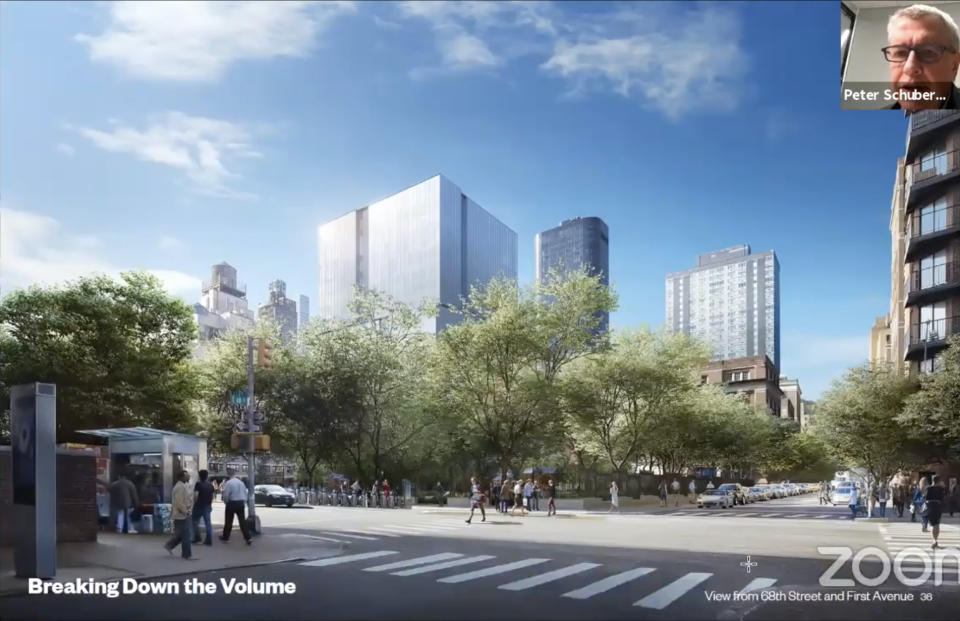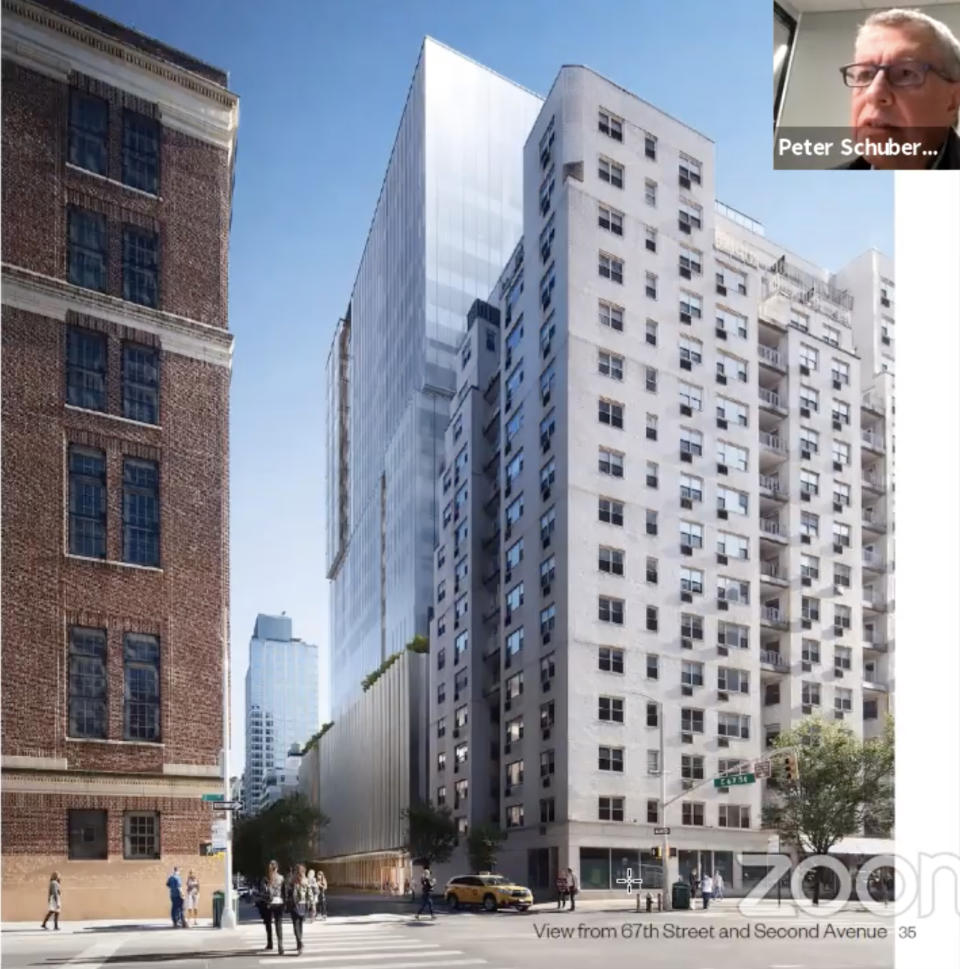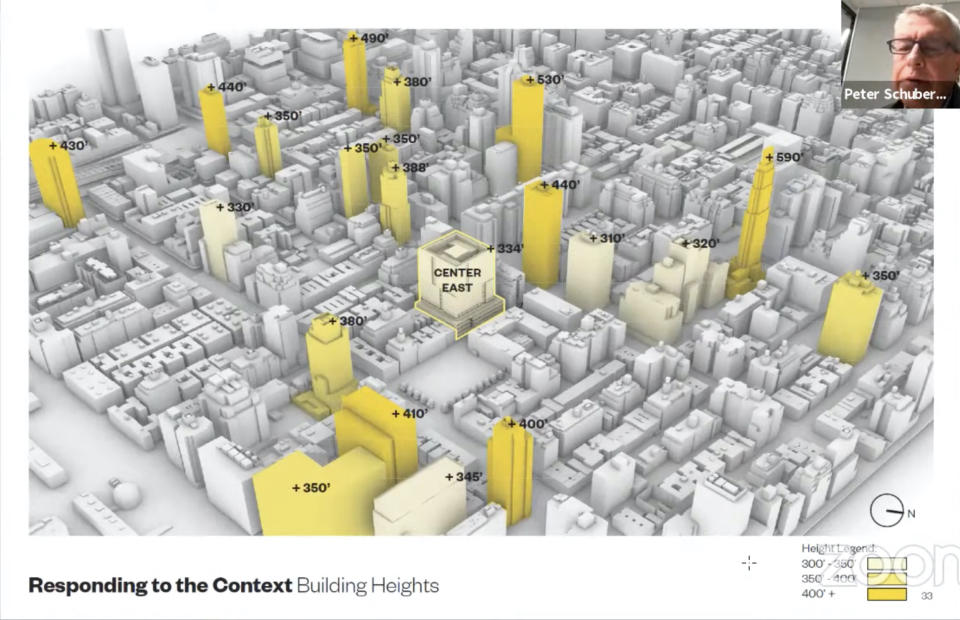UES Community Board Harshly Critical Of Blood Center Expansion
UPPER EAST SIDE, NY — Members of an Upper East Side community board signaled strong opposition Tuesday to the New York Blood Center's plans for a major neighborhood expansion, expressing worries over its size, timeline and the need to change zoning regulations in order to build it.
Nearly 300 people joined Tuesday's Community Board 8 zoning and development committee meeting — the board's first chance to weigh in on the project, which the Blood Center announced last month.
The plans call for replacing the center's three-story brick building on East 67th Street with a glassy, 16-story tower that would serve as a life sciences hub, housing the Blood Center as well as other tenants.
For the project to move forward, the city would need to rezone the Blood Center's block on 67th east of Second Avenue to allow for increased density. Construction would begin in 2022 and last into 2026, creating more than 1,500 new jobs with an economic output of $1.1 billion.
Neighbors on Tuesday expressed concerns about how the 334-foot tower and years of construction would affect surrounding schools and nearby St. Catherine's Park, and worried about the precedent that would be set by rezoning a midblock site.

"The stress of four years of construction will be really difficult," said Joshua Satin, principal of the neighboring Ella Baker School, who is opposing the project because of its potential to increase traffic congestion on surrounding streets.
Other opponents who spoke up included a parent at Ella Baker, an attorney representing a nearby residential building and residents who argued that the Upper East Side's less-dense midblock areas should be preserved, with taller construction reserved for the avenues.
Blood Center President Chris Hillyer told the board during a presentation that the nonprofit was in dire need of expanding beyond its current building, which dates to 1930 and has physical limitations that prevent it from expanding key research programs.
"Our facility is very old, it’s outdated, it’s almost impossible to recruit people into," he said.

Leaders have said the new headquarters, dubbed Center East, will serve as a state-of-the art life sciences hub that will help further the Blood Center's mission, including its prominent role in the city's response to the coronavirus pandemic. The first five floors would be filled by the Blood Center, while the remaining floors would be leased out to other tenants including startups and biotech firms.
Presenters also showed the results of a shadow analysis conducted at St. Catherine's Park, located across the street from the Blood Center, which found that the new tower would add up to four hours of new afternoon shadows each day during the summer, and less during the spring, fall and winter.
Blood Center leaders described the expansion as an exciting opportunity to remake the Upper East Side into a research corridor, allowing for more collaboration with Mount Sinai Beth Israel, Rockefeller University and other institutions.

They also defended the tower's size and design, noting it would be shorter than other recent construction in the neighborhood and arguing that its light-colored appearance would match nearby buildings like NewYork-Presbyterian Hospital and Weill Cornell Medical Center.
A plurality of committee members ultimately voted Tuesday to send a letter to Blood Center leaders outlining their concerns.
The project won initial support from Mayor Bill de Blasio's administration as well as Manhattan Borough President Gale Brewer, who called it "a proposed solution that will make us both more resilient in the face of future pandemics and provide an economic engine that will be essential to our City's success moving forward."
During the pandemic, the Blood Center has developed convalescent plasma therapies to treat COVID-19 and has been involved in trials for vaccine candidates. In normal times, the Center supplies blood products to hospitals around the city, delivers stem cells to more than 45 countries, and has also helped develop vaccines to treat HIV, SARS and MERS.
Opposition to Lenox Hill project
Also on Tuesday, CB8 member Anthony Cohn updated the board on the ongoing task force meetings between Northwell Health, which is seeking to expand Lenox Hill Hospital, and local residents and elected officials.
While Northwell has made significant concessions, including removing a 490-foot residential tower and reducing the height of its planned hospital tower, opponents remain skeptical of the project's size and have questioned why Northwell is seeking to expand within an affluent neighborhood rather than building new locations in lower-income, minority communities in the outer boroughs.
Cohn added that unlike the Blood Center, Northwell has not presented any studies showing how the Lenox Hill construction would affect shadows, street traffic or subway congestion in the neighborhood.
Both the Lenox Hill and Blood Center projects will need to go through the city's Uniform Land Use Review Process (ULURP), where the community board, Borough President, City Council and other groups get to weigh in on the full proposal.
"Their refusal to share [the studies] with us before they absolutely have to, as part of the ULURP process, tells me a lot about their intentions," Cohn said.
Read previous coverage from Patch:
This article originally appeared on the Upper East Side Patch

